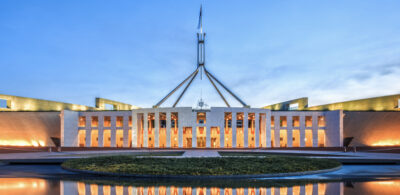Build-to-rent sector and ‘clean building’ tax reforms announced
22 May 2023
The Federal Budget released on 9 May 2023 included tax reforms aimed at supporting one of the Government’s key policies: increasing the supply of housing across Australia.
Changes to the rules impacting the build-to-rent (BTR) sector had been telegraphed in earlier announcements, however, other changes to expand the types of buildings that can be held in a ‘clean building MIT’ and increase the minimum ‘green star’ eligibility requirements that must be satisfied, represented new developments.
In this insight, we summarise the key changes.
Reduced MIT withholding rate
Applying from 1 July 2024, a reduced 15% withholding tax rate (down from 30%) will be available on eligible fund payments (distributions) to foreign investors from managed investment trusts (MITs) attributable to newly constructed residential BTR properties. To be eligible, the BTR project must satisfy the following criteria:
- construction must have commenced after 9 May 2023 (i.e. Budget night);
- the development must consist of at least 50 apartments or dwellings;
- those apartments or dwellings must be made available for rent to the general public and must be retained under single ownership for at least 10 years before being sold; and
- the landlords must offer a lease term of at least three years for each apartment or dwelling.
Various aspects of the implementation of these measures will be the subject of consultation, including any minimum proportion of dwellings that must be offered as affordable tenancies.
This change brings BTR projects into line with other withholding tax concessions. Such concessions are already generally available to foreign residents in qualifying jurisdictions (information exchange countries) who are investing in MITs that are engaged in other long-term, non-residential property projects (e.g. offices, hotels etc).
This is a welcome change and removes one disincentive for foreign capital to be deployed in the BTR sector, especially when compared to investments in other classes of property in Australia. The measures are designed to stimulate interest in the BTR asset class and will go some way to achieving the Government’s objective of reducing the pressures around housing availability in the market by expanding supply.
Accelerated depreciation
Another measure designed to attract investment in the BTR sector is an increase in the tax depreciation rate for eligible new BTR projects from 2.5% to 4% per annum, where construction commences after 9 May 2023. This measure will allow expenses to be depreciated for tax purposes over a 25-year span, rather than the usual 40 years, thereby accelerating the benefits.
This measure will only be available for BTR projects that satisfy the conditions set out above in respect of the MIT withholding tax changes.
Changes to clean building MITs
New changes were also announced as part of the Federal Budget to extend the clean building MIT withholding tax concession. A MIT will be a clean building MIT where it is a ‘withholding MIT’ that holds one or more ‘clean buildings’. The MIT must not derive assessable income from any taxable Australian property other than from clean buildings (or assets that are reasonably incidental to those buildings, and where such portion of income from incidental assets is no more than 5% of the assessable income derived from clean buildings).
The Federal Budget contained two key measures in relation to the ‘clean building MIT’ regime:
- the MIT regime will now extend to data centres and warehouses (provided that the other eligibility criteria are satisfied). This supplements the current asset classes such as office buildings, hotels and shopping centres; and
- the minimum energy standards for existing and new clean buildings will be increased to either:
- a 6-star rating from the Green Building Council Australia (previously a 5-star rating was adequate); or
- a 6-star rating under the National Australian Built Environment Rating System (previously a 5.5-star rating was adequate).
- a 6-star rating from the Green Building Council Australia (previously a 5-star rating was adequate); or
These measures will apply from 1 July 2025 for projects where construction commences after 9 May 2023.
Final comments
These latest taxation measures are part of the Federal Government’s policy of relieving the pressure regarding availability of housing by stimulating the BTR sector. They supplement other measures such as the A$10 billion Housing Australia Future Fund announced in the October 2022 Federal Budget (which aims to deliver 20,000 new social housing dwellings and 10,000 new affordable housing dwellings within five years as summarised in our October Federal Budget: key takeaways insight article).
The measures are also consistent with increased momentum across the country to stimulate investment in housing generally, but specifically to stimulate investment in social and affordable housing. For example, as part of its budget released on 11 May 2023, the Western Australian Government announced a A$450 million dollar top-up to WA’s Social Housing Investment Fund. This represents a commitment to deliver 4,000 additional social houses (with 1,200 already delivered). A second limb of this policy was a A$49 million commitment to develop a pilot 100-home ‘Regional Supportive Landlord Model’ (building upon an existing program in the Perth and Peel regions).
From a tax perspective, Victoria and New South Wales have already moved in the housing space by introducing land tax concessions that offer a 50% reduction in the taxable value of land used for eligible BTR projects. Both Western Australia and Queensland have announced an intention to follow suit from 1 July 2023.
At the Federal level, it will be interesting to see whether any amendments to the GST rules impacting the BTR sector (primarily restrictions on input tax credit entitlement) will be made. In this regard, we note that the ATO is currently undertaking a consultation process in relation to the sector (which is expected to be completed in June 2023).
It is encouraging to see governments at all levels incentivising investment in housing and clean buildings by removing some of the impediments that have long been known to exist. It will now be left to monitor the details for the implementation of the changes (and any additional reforms) as they emerge after a period of consultation.
For more information on the above, and on the Federal Budget more broadly, please refer to our Federal Budget 2023/24: key business tax measures insight article.
Authors

Partner

Head of Real Estate

Partner

Senior Associate
Tags
This publication is introductory in nature. Its content is current at the date of publication. It does not constitute legal advice and should not be relied upon as such. You should always obtain legal advice based on your specific circumstances before taking any action relating to matters covered by this publication. Some information may have been obtained from external sources, and we cannot guarantee the accuracy or currency of any such information.


